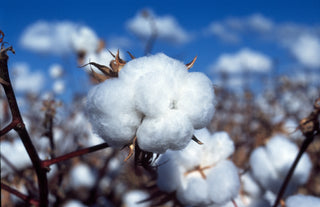The Thirsty Crop
Contemporary data reveals alarming water consumption in traditional cotton farming. A report from Forbes highlights that it takes 1,931 liters of irrigation water and 6,003 liters of rainwater to produce 1kg of cotton fibre, roughly equivalent to a t-shirt and a pair of jeans. In regions facing water scarcity, such as parts of India and the United States, this strain on water resources has real-life implications for local communities and ecosystems.
Pesticide Perils
Anecdotes from cotton-producing regions underscore the pesticide perils associated with conventional cotton farming. Farmers in India's cotton belt report health issues linked to prolonged exposure to pesticides. The documentary "The True Cost" sheds light on the devastating impact on communities, revealing instances of water contamination and health crises tied to the chemicals used in cotton cultivation.
Land Hunger and Deforestation
Satellite imagery and on-the-ground reports showcase the extent of land hunger tied to cotton cultivation. In Uzbekistan, once home to the Aral Sea, the expansion of cotton fields has contributed to one of the world's worst environmental disasters. The Aral Sea has shrunk drastically due to diverted water for cotton, leaving behind a landscape of environmental devastation.

Carbon Footprint
Contemporary studies emphasize the carbon footprint of conventional cotton. Research estimates that the global fashion industry accounts for about 10% of annual global carbon emissions, with cotton production playing a significant role. The push for transparency in fashion supply chains has brought attention to the carbon impact of cotton from field to fabric.
Sustainable Alternatives
Amid the concerns, sustainable alternatives gain traction. Brands adopting organic cotton, such as Patagonia and Eileen Fisher, showcase a commitment to reducing the environmental impact. The rise of innovative fabrics like Tencel, made from sustainably sourced wood pulp, marks a shift towards more eco-friendly choices in the fashion industry.

Embracing sustainable alternatives is pivotal in transforming our wardrobes into eco-conscious collections. Here's a brief list of various alternative fibres:
- Organic Cotton: Grown without synthetic chemicals, organic cotton reduces the environmental impact associated with conventional cotton.
- Hemp: A versatile and robust fibre, hemp requires less water and fewer pesticides than traditional cotton, making it an environmentally friendly choice.
- Bamboo: Known for its rapid growth and minimal water requirements, bamboo fibres produce soft and breathable textiles, providing a sustainable alternative to cotton.
- Tencel (Lyocell): Derived from sustainably sourced wood pulp, Tencel utilizes a closed-loop production system, reducing environmental impact and promoting a circular economy.
- Recycled Fabrics: Choosing recycled materials, such as recycled polyester or cotton, minimizes the demand for new raw materials and reduces the environmental footprint of textile production.
Conclusion
At the heart of the textile industry, cotton stands as the second most-produced fibre globally, playing an indispensable role as the raw material upon which denim, a staple in fashion, depends. The livelihoods of a vast network of stakeholders, ranging from the 20 million cotton farmers dispersed across 75 countries to the individuals toiling in cotton gins, mills, manufacturers, and garment factories are all dependent on conventional cotton farming. The intricate web of the cotton industry underscores the need for transparency and accurate information to safeguard the well-being of millions within its supply chain.
As a sustainable fashion brand, we recognize the transformative power we wield in steering change through our choices and inclusivity. This conscious shift towards alternative fibre signifies our dedication to redefining the industry's foundation, ensuring the well-being of millions within its intricate supply chain while safeguarding our planet for future generations.


